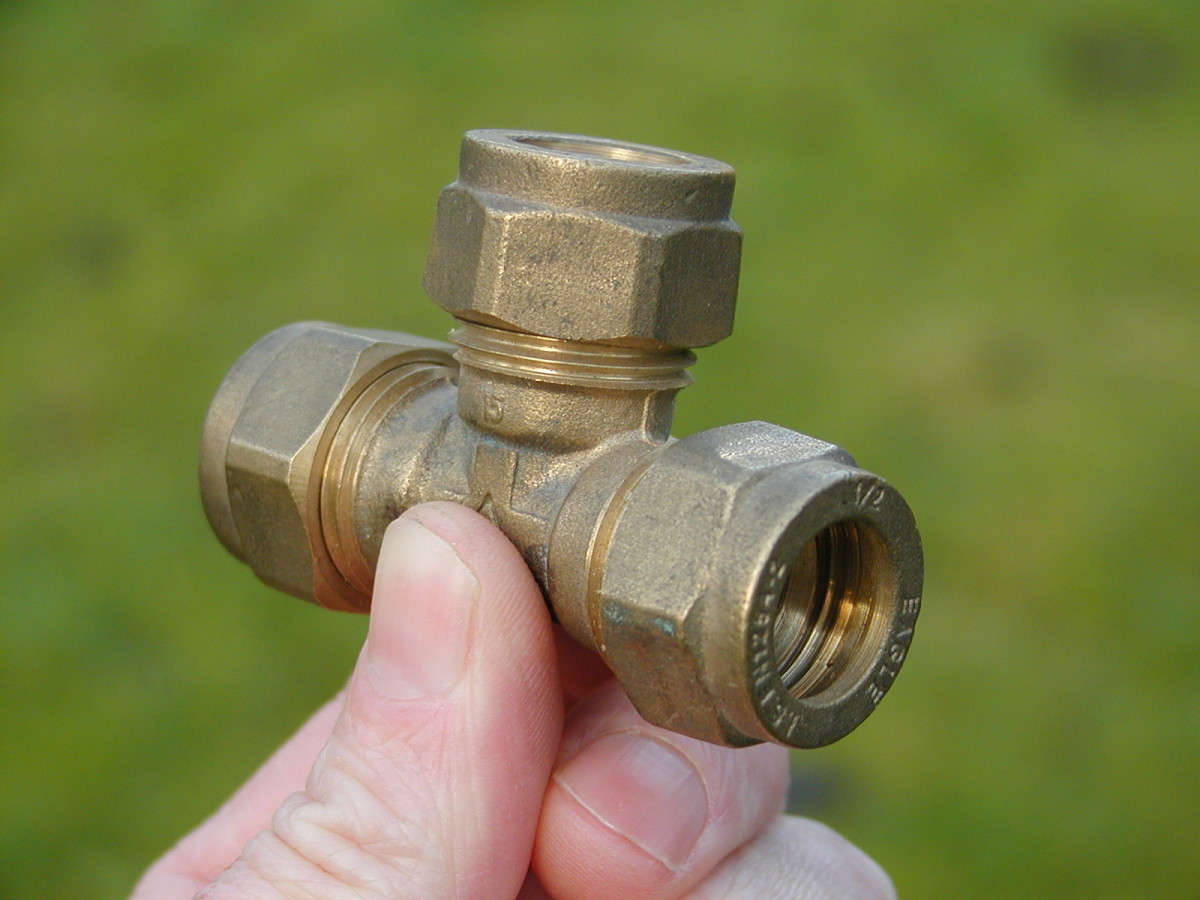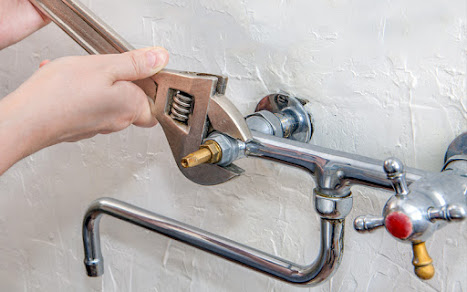They are making a number of good pointers relating to Why Do My Plumbing Pipes Make A Knocking Noise as a whole in this post underneath.

To identify noisy plumbing, it is very important to determine first whether the undesirable sounds happen on the system's inlet side-in various other words, when water is turned on-or on the drain side. Noises on the inlet side have differed causes: extreme water pressure, worn shutoff and tap parts, incorrectly connected pumps or various other home appliances, inaccurately put pipeline fasteners, and plumbing runs having a lot of tight bends or various other constraints. Noises on the drainpipe side typically originate from bad area or, just like some inlet side noise, a design containing limited bends.
Hissing
Hissing noise that takes place when a faucet is opened somewhat generally signals extreme water pressure. Consult your regional water company if you think this problem; it will have the ability to tell you the water stress in your area and also can mount a pressurereducing valve on the inbound supply of water pipeline if necessary.
Other Inlet Side Noises
Squeaking, squeaking, scraping, breaking, and touching usually are triggered by the growth or contraction of pipelines, generally copper ones supplying warm water. The sounds occur as the pipes slide against loosened fasteners or strike neighboring residence framework. You can typically determine the location of the issue if the pipelines are exposed; just comply with the sound when the pipes are making sounds. Most likely you will find a loosened pipeline wall mount or an area where pipelines exist so close to floor joists or various other mounting pieces that they clatter against them. Connecting foam pipeline insulation around the pipelines at the point of call need to fix the issue. Make sure bands and also hangers are safe and also provide adequate support. Where possible, pipeline bolts should be attached to large architectural aspects such as structure wall surfaces instead of to framing; doing so reduces the transmission of resonances from plumbing to surface areas that can intensify and move them. If affixing bolts to framework is unavoidable, cover pipes with insulation or other resilient material where they contact fasteners, as well as sandwich the ends of new fasteners between rubber washers when installing them.
Remedying plumbing runs that deal with flow-restricting limited or countless bends is a last resort that needs to be undertaken only after speaking with a competent plumbing professional. Regrettably, this circumstance is fairly common in older houses that may not have actually been constructed with interior plumbing or that have actually seen a number of remodels, particularly by novices.
Chattering or Screeching
Intense chattering or shrilling that takes place when a shutoff or tap is switched on, and that typically disappears when the installation is opened totally, signals loose or faulty internal parts. The solution is to change the shutoff or tap with a new one.
Pumps as well as appliances such as cleaning equipments as well as dishwashing machines can transfer electric motor sound to pipes if they are improperly connected. Connect such things to plumbing with plastic or rubber hoses-never stiff pipe-to isolate them.
Drainpipe Sound
On the drainpipe side of plumbing, the chief goals are to remove surface areas that can be struck by falling or rushing water and also to protect pipes to include unavoidable audios.
In brand-new construction, bath tubs, shower stalls, toilets, and also wallmounted sinks as well as basins should be set on or versus resilient underlayments to reduce the transmission of audio with them. Water-saving bathrooms and taps are less noisy than standard models; mount them rather than older types even if codes in your location still allow using older components.
Drains that do not run vertically to the cellar or that branch into straight pipeline runs supported at flooring joists or other mounting present specifically bothersome noise troubles. Such pipes are huge enough to emit significant vibration; they additionally carry substantial amounts of water, that makes the circumstance worse. In new construction, define cast-iron soil pipelines (the large pipelines that drain bathrooms) if you can afford them. Their enormity contains a lot of the noise made by water going through them. Also, stay clear of routing drainpipes in wall surfaces shown bedrooms as well as rooms where people collect. Walls having drainpipes must be soundproofed as was described earlier, making use of double panels of sound-insulating fiber board as well as wallboard. Pipelines themselves can be wrapped with unique fiberglass insulation made for the function; such pipelines have an impervious plastic skin (sometimes including lead). Outcomes are not constantly satisfying.
Thudding
Thudding sound, frequently accompanied by shivering pipelines, when a faucet or home appliance shutoff is turned off is a problem called water hammer. The sound and resonance are brought on by the reverberating wave of stress in the water, which all of a sudden has no area to go. Sometimes opening a shutoff that discharges water quickly into an area of piping having a restriction, elbow joint, or tee installation can generate the same condition.
Water hammer can normally be healed by installing fittings called air chambers or shock absorbers in the plumbing to which the problem valves or taps are connected. These devices enable the shock wave developed by the halted circulation of water to dissipate in the air they contain, which (unlike water) is compressible.
Older plumbing systems may have brief upright areas of capped pipe behind walls on faucet competes the very same objective; these can eventually fill with water, decreasing or ruining their efficiency. The treatment is to drain pipes the water system completely by shutting off the primary water system shutoff as well as opening up all taps. After that open up the major supply shutoff and also shut the taps one at a time, beginning with the tap nearest the shutoff and finishing with the one farthest away.
3 Most Common Reasons for Noisy Water Pipes
Water hammer
When water is running and is then suddenly turned off, the rushing liquid has no place to go and slams against the shut-off valve. The loud, thudding sound that follows is known as a water hammer. Besides being alarming, water hammer can potentially damage joints and connections in the water pipe itself. There are two primary methods of addressing this issue.
Check your air chamber. An air chamber is essentially a vertical pipe located near your faucet, often in the wall cavity that holds the plumbing connected to your sink or tub. The chamber is filled with air that compresses and absorbs the shock of the fast moving water when it suddenly stops. Unfortunately, over time air chambers tend to fill with water and lose their effectiveness. To replenish the air chambers in your house you can do the following. Turn off the water supply to your house at the main supply (or street level). Open your faucets to drain all of the water from your plumbing system. Turn the water back on. The incoming water will flush the air out of the pipes but not out of the vertical air chamber, where the air supply has been restored. Copper pipes
Copper pipes tend to expand as hot water passes through and transfers some of its heat to them. (Copper is both malleable and ductile.) In tight quarters, copper hot-water lines can expand and then noisily rub against your home's hidden structural features — studs, joists, support brackets, etc. — as it contracts.
One possible solution to this problem is to slightly lower the temperature setting on your hot water heater. In all but the most extreme cases, expanding and contracting copper pipes will not spring a leak. Unless you’re remodeling, there's no reason to remove sheetrock and insert foam padding around your copper pipes.
Water pressure that’s too high
If your water pressure is too high, it can also cause noisy water pipes. Worse, high water pressure can damage water-supplied appliances, such as your washing machine and dishwasher.
Most modern homes are equipped with a pressure regulator that's mounted where the water supply enters the house. If your home lacks a regulator, consider having one professionally installed. Finally, remember that most plumbers recommend that water is delivered throughout your home at no lower than 40 and no greater than 80 psi (pounds per square inch).
Whatever the state of your plumbing, one thing is certain — you’re eventually going to encounter repair and replacement issues around your home that require professional help. That’s where American Home Shield can come to your aid.
https://www.ahs.com/home-matters/repair-maintenance/causes-of-noisy-water-pipes/

Hopefully you enjoyed our section on Why is My Home Making Strange Plumbing Noises. Thank you for taking time to read our article. Are you aware of another person who is enthusiastic about Why Your Water Pipes Are Noisy and How To Shut Them Up? Please feel free to share it. Thanks a lot for your time spent reading it.
Book Appointment Now